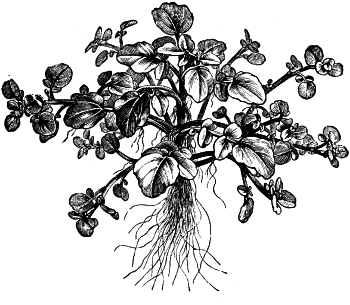Dorothy Hartley’s good watercress sandwich.
 Food in England, Dorothy Hartley’s lengthy (662 pages) love letter to British (yes; Scottish and Welsh topics appear despite the title) foodways includes but a single recipe for sandwiches. It should be no surprise to readers familiar with her work that, if Hartley included only the single recipe, it would be both simple and good. In fact it is excellent. There is little point in changing her terms of engagement, for they are not only engaging but also practical. A few notes explain for American readers (and some younger Britons) some of her somewhat archaic terms; Food in England first appeared, in London, in 1954.
Food in England, Dorothy Hartley’s lengthy (662 pages) love letter to British (yes; Scottish and Welsh topics appear despite the title) foodways includes but a single recipe for sandwiches. It should be no surprise to readers familiar with her work that, if Hartley included only the single recipe, it would be both simple and good. In fact it is excellent. There is little point in changing her terms of engagement, for they are not only engaging but also practical. A few notes explain for American readers (and some younger Britons) some of her somewhat archaic terms; Food in England first appeared, in London, in 1954.
“A good cress sandwich:
Cut brown bread and butter it; lay the slices around; dip each sprig of cress in kitchen salt (the crunchy type, not the powdered), pack closely all over half the slices; press the top slices firmly down upon the under slices and stack the sandwiches one on top of another and serve at once. Do not trim off the characteristic little frill of green leaflets that escape beyond the brown edge of the sandwich, and add to its enjoyment.” (Food 392)
Notes:
- Brown bread is of course not Boston brown bread made with cornmeal, molasses and raisins, but rather what in the United States is whole wheat bread.
- Hartley wrote this lovely paean to the watercress sandwich in 1954, and would that the culinary landscape looked the same almost six decades on:
“Watercress for tea is essentially English. You get it in the most unexpected places! I have had it in country cottages, in cathedral city tea-rooms, and the British Museum.” (Food 392)
- ‘Kitchen salt’ in 1954 referred to granulated as opposed to block salt. An excellent choice of salt for these excellent sandwiches is Maldon, a subtle sea salt in diaphanous flakes from Britain.

